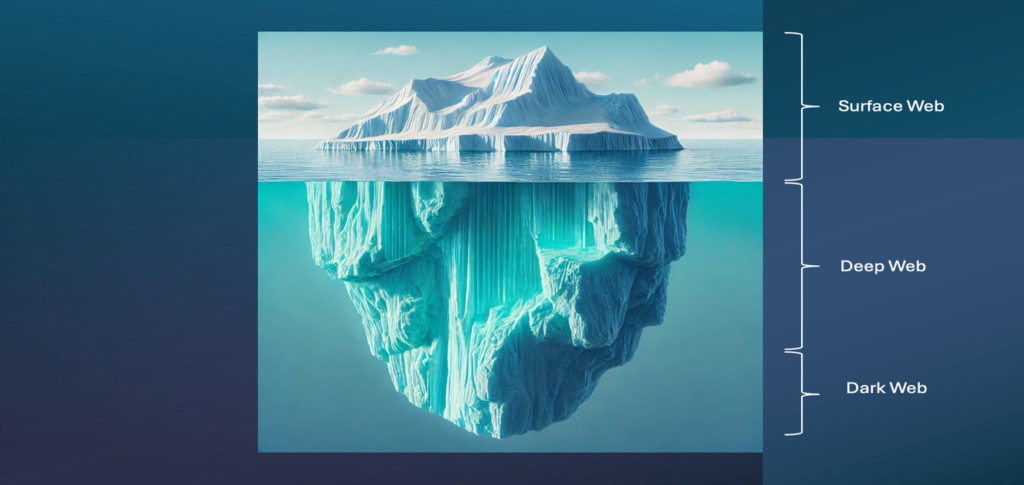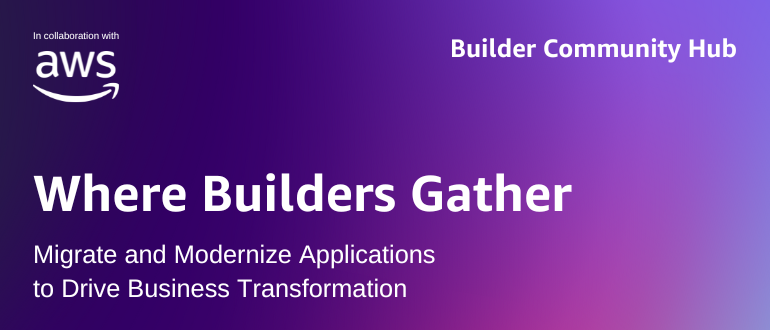The internet is vast. While most of us spend our days browsing the surface web—Facebook, Google, Instagram, Netflix—there’s another world lurking beneath, hidden from your search engine results: a shadowy, cryptic, and often misunderstood corner of the internet: the dark web.
What if I told you that the dark web isn’t just a playground for nefarious activities, but also an essential tool for privacy, free speech, and believe it or not, corporate security?
In this blog, we’re diving deep into the dark web—separating fact from fiction and revealing the real impact it has on organizations like yours. How can it help your business? How can it cripple you if you aren’t careful? Buckle up, because this might not be the story you expect.
1. What is the Dark Web?
Let’s start with the basics: What exactly is the dark web?
Imagine the internet as an iceberg. The surface web is what you see above the waterline—the websites we use every day, from Amazon to YouTube. The deep web is the submerged portion below the surface: private databases, password-protected sites, and other content not indexed by search engines. This includes email accounts, online banking, and even internal company networks that are not publicly accessible.
But here’s the catch: the dark web is a hidden layer beneath the deep web, intentionally concealed and often only accessible through specialized tools like Tor. It’s not indexed, and it’s meant to provide extreme privacy and anonymity, making it a space where people can communicate freely without being tracked.

Diagram: The different layers of Internet
So, the layers of the internet iceberg are:
- Above the Waterline: The Surface Web (public websites like Google, Facebook, and Amazon).
- Below the Waterline: The Deep Web (private, unindexed content such as email inboxes, subscription-based services, databases, and internal company networks).
- Far Below the Waterline: The Dark Web (a small, hidden portion of the deep web, accessible only with tools like Tor, often used for anonymous communication).
Now, here’s the plot twist: It’s not all illegal. In fact, it’s often used by people who need privacy or anonymity—journalists, activists, and even companies like yours.
In the case of the Panama Papers, secure communication platforms, including Tor (often associated with the dark web), were likely used by journalists to protect their sources and ensure confidentiality. While the dark web itself wasn’t the exclusive platform for the leak, the technology behind it was crucial for maintaining privacy in an otherwise risky situation.
But… it’s not all sunshine and rainbows. The dark web is also home to its fair share of criminal activity—illegal marketplaces, hackers-for-hire, and stolen data. More on that in a second.
2. The Dark Web and Its Secret Sauce: How It Works
To access the dark web, you need a special tool like Tor (The Onion Router). Think of Tor as a cloak of invisibility. When you use it, your internet traffic is scrambled and bounced through a series of encrypted “nodes” around the world. The result? Your identity and location are nearly impossible to trace.
This technology—often referred to as onion routing—creates a web of anonymity. You’re hidden, so no one can monitor your online activities. Sounds pretty powerful, right? That’s why journalists in oppressive regimes or those investigating sensitive stories use it.
In 2016, ProPublica, a U.S. news outlet, launched an onion domain of its website. Why? To enable whistleblowers and vulnerable sources to access the site securely—without fear of government surveillance. If a journalist is investigating corruption in a country with heavy censorship, the dark web allows them to do so safely. This kind of use shows the dark web’s power in enabling freedom of expression when there’s a very real risk of repression.
3. How Organizations Can Leverage the Dark Web
Wait, what? The dark web isn’t just for criminals?
It’s true. While the dark web is often associated with illicit activity, it’s also a resource that organizations can strategically leverage for a variety of purposes. It’s not just about monitoring threats—it’s about gaining intelligence, securing business operations, and ensuring competitive advantage in an increasingly digital world. Here’s how:
- Identifying Vulnerabilities and Exploits
Adversaries aren’t the only ones taking advantage of vulnerabilities. By monitoring discussions and activities on the dark web, organizations can learn about new exploits that might be targeting their industry. This information can help them stay ahead in patching systems and fortifying their defenses before attacks happen. - Protecting Sensitive Communications
In today’s world, security isn’t just about firewalls or antivirus software. Privacy is just as critical. For businesses, safeguarding sensitive communications is essential—whether it’s sharing client information or corporate strategies. By monitoring the dark web, companies can identify if their communications or sensitive data are being exposed or sold. Early detection is key to preventing potential breaches and securing information.By using specialized tools like Tor, companies can secure their digital conversations, keeping them out of reach from hackers or prying governments. If your organization handles sensitive data or confidential discussions, leveraging these secure channels ensures your information remains private, even in the most high-risk environments.
- Ensuring Whistleblower Security
What if an insider or employee wants to report unethical behavior without risking exposure? The dark web can offer a protected space for whistleblowers to securely share sensitive documents, while maintaining complete anonymity. Organizations can create secure portals on the dark web for employees to report security issues or internal misconduct without fear of retaliation. - Bypassing Censorship
In certain regions of the world, access to vital information is often blocked, and oppressive governments heavily monitor online activities. The dark web allows users to bypass these restrictions and share information freely, which can be crucial for organizations operating in these environments.Employees, activists, and journalists in these high-risk zones rely on the dark web to communicate without the fear of being censored or monitored. For companies with global operations, this means enabling safe access for employees in restrictive environments and ensuring that vital information reaches the right people—without interference.
- Tracking Intellectual Property Theft
The dark web is often a hub for stolen intellectual property, from trade secrets to proprietary software. By keeping an eye on dark web marketplaces and forums, businesses can detect whether their intellectual property is being trafficked, allowing them to act swiftly to mitigate damage or pursue legal action.But here’s the kicker: While these technologies can safeguard privacy and support free speech, they can also be exploited. While the dark web can be a shield, it’s also a place where malicious actors may hide. So, the same tools that help your organization can be turned against you if not used carefully.
4. The Dark Web: A Double-Edged Sword for Organizations
As much as the dark web can fortify your business, it can also cripple it if you’re not careful. Here’s why:
- Data Leaks and Stolen Information
The dark web is a marketplace for stolen data. Once criminals steal your company’s data—customer info, financial records, or employee credentials—they often sell it on dark web forums.One prominent example of stolen data being sold on the dark web in 2024 is the MOVEit Transfer breach, where sensitive corporate data from financial institutions and healthcare companies was auctioned on dark web forums. Attackers exploited vulnerabilities in MOVEit’s file transfer system, exposing personal and financial details, and subsequently offering this data for sale to the highest bidder. In 2024, the Change Healthcare data breach exposed sensitive patient data, including medical records and insurance details, which were found being sold on dark web marketplaces.
- Cybercriminals and Malware
The dark web is a thriving marketplace for hacker-for-hire services and malicious software. Cybercriminals can easily pay for access to ransomware tools or services to launch attacks, often targeting competitors or demanding ransom from businesses. The financial impact of cybercrime is staggering. According to Cybersecurity Ventures, the global cost of cybercrime is set to exceed $10.5 trillion annually by 2025, with ransomware being a major contributor. Even as groups like Conti have disbanded, the ransomware-as-a-service model continues to thrive, with new actors emerging to exploit businesses for profit. A prominent case in 2024 involved the Royal Ransomware Group, which targeted critical infrastructure, holding data hostage and demanding millions in ransom. The rise of such groups highlights the continued and growing danger of dark web activities, where malware and ransomware developers can quickly monetize their attacks. - Brand Damage and Reputation Loss
If your company’s internal data ends up on the dark web, your brand can suffer irreparable damage. Consumers and clients are unlikely to trust an organization with poor data protection practices. The Yahoo data breach of 2013—which wasn’t fully disclosed until 2016—compromised over 3 billion user accounts. Once the data was up for grabs on the dark web, Yahoo’s reputation was tarnished forever. - Downtime and Inability to Access Critical Systems
In today’s digital landscape, the dark web plays a key role in enabling cybercriminal activities that can disrupt your business. Ransomware groups and malware developers often use the dark web to sell tools, hacked data, and even attack services.The NotPetya attack, for example, which crippled organizations like Maersk, Merck, and FedEx , was likely facilitated by tools and tactics shared on dark web forums. These companies faced prolonged downtime, significant financial losses, and long-term operational setbacks, a cost that ran into the billions of dollars. The dark web’s role in hosting these threats means that businesses are constantly vulnerable to cybercriminals seeking to exploit their digital infrastructure.
5. How to Protect Your Organization from Dark Web Threats
If you’re running a business, here’s what you need to do to stay safe:
- Dark Web Monitoring
Use tools to monitor the dark web for any mention of your brand, employees, or proprietary information. Proactive monitoring is key to detecting breaches or leaks early and preventing further damage. - Employee Awareness and Training
Educate your employees on cybersecurity best practices, from using strong passwords to spotting phishing attempts. Awareness is half the battle. - Robust Cybersecurity Systems
Encrypt sensitive data, regularly update software, deploy technologies like intrusion detection systems, microsegmentation, etc. Strong cybersecurity technologies and protocols are essential in preventing data breaches and attacks.
Conclusion: The Dark Web is Not What You Think
The dark web is neither all good nor all bad—it’s simply a tool, like any other. On one hand, it can protect your privacy, safeguard sensitive communications, and even secure your company’s intellectual property. On the other, it can be a breeding ground for cybercriminals who are more than willing to exploit your vulnerabilities.
But here’s the truth: the dark web isn’t going away. It’s becoming more important for protecting digital privacy and communication. Understanding its risks—and how to mitigate them—could be the difference between your organization thriving in a digital world or becoming the next victim.
So, the question is: Will you use the dark web to protect your organization—or let it be used against you?
The post Unveiling the Dark Web: Myths, Realities, and Risks You Didn’t Know About appeared first on ColorTokens.
*** This is a Security Bloggers Network syndicated blog from ColorTokens authored by Devasmita Das. Read the original post at: https://colortokens.com/blogs/dark-web-myths-realities-risks/

